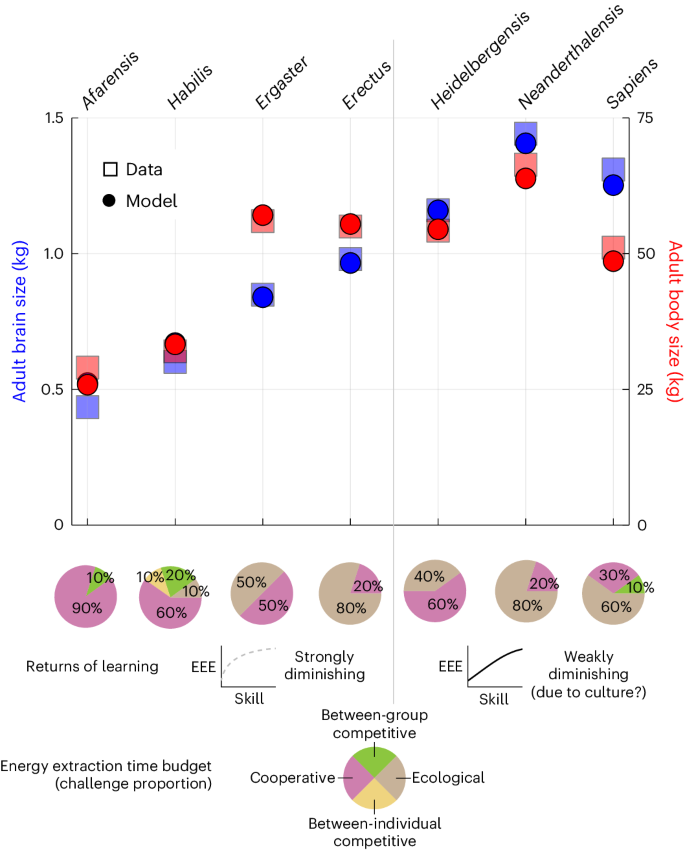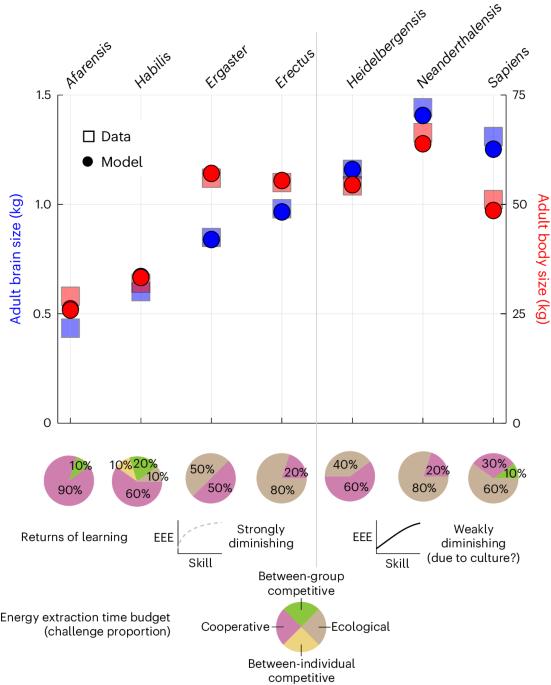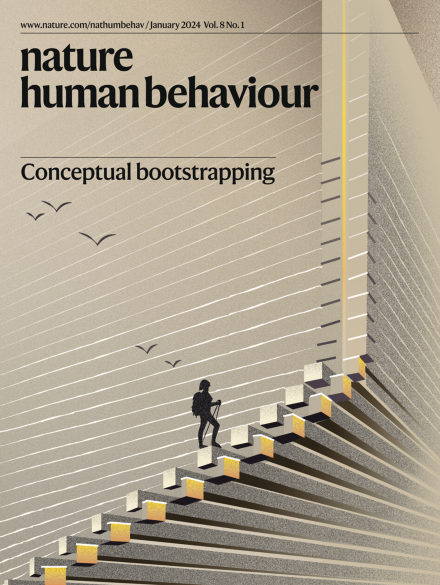类人猿大脑大小的进化-发育(evo-devo)动态变化
IF 21.4
1区 心理学
Q1 MULTIDISCIPLINARY SCIENCES
引用次数: 0
摘要
人类的脑容量在四百多万年的时间里增加了两倍,但为什么会出现这种情况仍不清楚。在这里,为了研究大脑扩张的原因,我对类人猿大脑大小的进化和发展(evo-devo)动态进行了数学建模。该模型还原了:(1)七个类人物种的大脑和身体尺寸的进化,这些物种的大脑和身体尺寸都是以澳洲始祖鸟的大脑和身体尺寸为起点的;(2)类人大脑和身体尺寸的进化;(3)人类发展和进化的主要模式。我的研究表明,大脑的扩张并不是由于对大脑大小的直接选择造成的,而是由于它与发育晚期排卵前卵泡的遗传相关性造成的。如果个体经历了具有挑战性的生态环境和看似累积性的文化等条件,这种相关性就会在发育过程中产生。这些研究结果表明,异常适应性特征的进化可能主要不是由选择引起的,而是由转移选择的发育限制引起的。本文章由计算机程序翻译,如有差异,请以英文原文为准。


Evolutionary–developmental (evo-devo) dynamics of hominin brain size
Brain size tripled in the human lineage over four million years, but why this occurred remains uncertain. Here, to study what caused this brain expansion, I mathematically model the evolutionary and developmental (evo-devo) dynamics of hominin brain size. The model recovers (1) the evolution of brain and body sizes of seven hominin species starting from brain and body sizes of the australopithecine scale, (2) the evolution of the hominin brain–body allometry and (3) major patterns of human development and evolution. I show that the brain expansion recovered is not caused by direct selection for brain size but by its genetic correlation with developmentally late preovulatory ovarian follicles. This correlation is generated over development if individuals experience a challenging ecology and seemingly cumulative culture, among other conditions. These findings show that the evolution of exceptionally adaptive traits may not be primarily caused by selection for them but by developmental constraints that divert selection. A mathematical model of the evolution and development of hominin brain size suggests that the evolution of a larger brain size in humans may have been driven by changes in developmental constraints rather than selection for brain size.
求助全文
通过发布文献求助,成功后即可免费获取论文全文。
去求助
来源期刊

Nature Human Behaviour
Psychology-Social Psychology
CiteScore
36.80
自引率
1.00%
发文量
227
期刊介绍:
Nature Human Behaviour is a journal that focuses on publishing research of outstanding significance into any aspect of human behavior.The research can cover various areas such as psychological, biological, and social bases of human behavior.It also includes the study of origins, development, and disorders related to human behavior.The primary aim of the journal is to increase the visibility of research in the field and enhance its societal reach and impact.
 求助内容:
求助内容: 应助结果提醒方式:
应助结果提醒方式:


